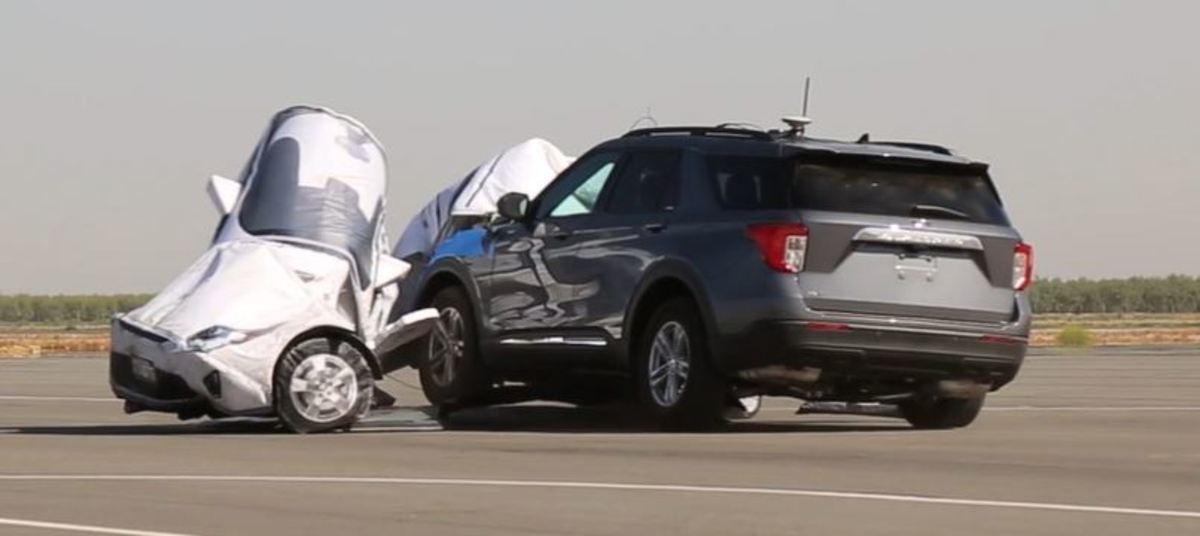How higher-speed automatic braking could save thousands of lives annually
20 automakers have voluntarily made Automatic Emergency Braking a standard feature on their vehicles, but now regulators want the system to go even further.

Automatic braking systems have come a long way in a short amount of time, but now regulators are calling for the tech to go even further. Automatic Emergency Braking (AEB) utilizes cameras, LIDAR, and sensors to detect an impact as it’s about to happen, warn drivers, and hit the brakes if the driver fails to respond.
Automakers implemented AEB mostly voluntarily, but regulatory agencies want them to go the extra mile and make the system operate at even higher speeds.
Automakers added AEB to their vehicles voluntarily
Back in 2016, the Insurance Institute for Highway Safety (IIHS) and the National Highway Traffic Safety Administration (NHTSA) brokered a deal with automakers. 20 automakers pledged to add AEB to nearly all of their vehicles by August 31, 2024. Consumer Reports monitored the pledges, and the deal was a success.
“Thanks to this cooperation, automakers made this safety feature standard equipment years before there was a legal mandate requiring them to do so,” said David Harkey, IIHS President. “Now that a regulation is on the horizon, the progress that we’ve made will be set in stone and expanded on to generate even bigger benefits.”
According to an estimate by the Insurance Institute for Highway Safety (IIHS), AEB will help prevent 42,000 crashes and 20,000 injuries by 2025. If the system operated at higher speeds, estimates indicate that AEB would save an additional 360 lives and prevent 24,000 injuries per year.
Related: BMW cars now drive themselves off the assembly line
Regulators want AEB to operate at up to 62 MPH
Researchers from AAA compared three vehicles from 2017 and 2018 to three 2024 model-year vehicles to see how far AEB systems have come in preventing crashes. The results spoke volumes, with the newer models proving twice as likely to avoid collisions when traveling at up to 35 MPH. The majority of the 2024 models avoided hitting their target at speeds up to 45 MPH, too.
Now regulators are eying the next milestone: highway speeds. Earlier this year, the NHTSA announced that all cars will need to come equipped with an AEB system capable of avoiding collisions at up to 62 MPH. On top of that, the updated AEB systems will need to be able to detect pedestrians both during the day and at night.
That’s not all, though. The NHTSA will also require automakers to develop an AEB system that’s capable of applying the brakes automatically at up to 90 MPH with another vehicle and 45 MPH for pedestrians.
“That’s practically impossible with available technology,” wrote John Bozzella, president and CEO of Alliance for Automotive Innovation.
Developing the tech isn’t the only obstacle. The cost comes into play as well, with the government suggesting a more advanced AEB system would only cost an additional $350 per vehicle. The Alliance for Automotive Innovation, however, disagrees, claiming that the cost to add the more advanced tech could run up to $4,200 per vehicle.
Final thoughts
Safety systems are crucial to preventing accidents and unnecessary injuries and deaths. The 2029 deadline is less than five years away, though, and while automakers worked with regulators to implement AEB voluntarily, they may not be willing or able to do so again.
Further developing the system itself isn’t the only obstacle. Stopping from higher speeds requires updated sensors that can see farther ahead as well as advances in braking systems. While my fingers are crossed that automakers can get the job done and make the roads a safer place, I wouldn’t place any bets on it.
Related: Ram’s first electric truck, the 1500 REV hits a roadblock










































